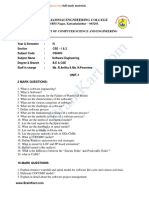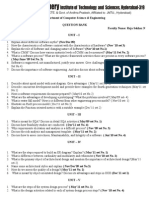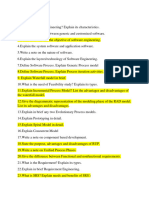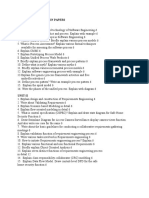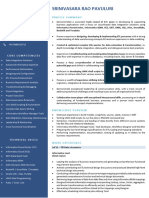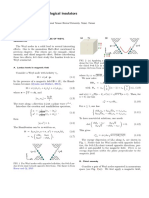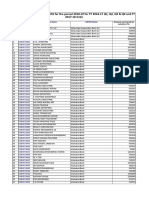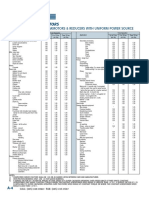0% found this document useful (0 votes)
91 views4 pagesSoftware Engineering Important Questions
The document outlines important questions related to software engineering across five units, covering topics such as software evolution, process models, requirements management, user interface design, software testing, and quality assurance. It includes both short and long questions aimed at assessing knowledge in various aspects of software engineering. The questions address fundamental concepts, methodologies, and best practices in the field.
Uploaded by
238r1a67j4Copyright
© © All Rights Reserved
We take content rights seriously. If you suspect this is your content, claim it here.
Available Formats
Download as DOCX, PDF, TXT or read online on Scribd
0% found this document useful (0 votes)
91 views4 pagesSoftware Engineering Important Questions
The document outlines important questions related to software engineering across five units, covering topics such as software evolution, process models, requirements management, user interface design, software testing, and quality assurance. It includes both short and long questions aimed at assessing knowledge in various aspects of software engineering. The questions address fundamental concepts, methodologies, and best practices in the field.
Uploaded by
238r1a67j4Copyright
© © All Rights Reserved
We take content rights seriously. If you suspect this is your content, claim it here.
Available Formats
Download as DOCX, PDF, TXT or read online on Scribd
/ 4












